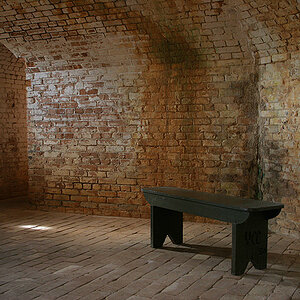Navigation
Install the app
How to install the app on iOS
Follow along with the video below to see how to install our site as a web app on your home screen.

Note: This feature currently requires accessing the site using the built-in Safari browser.
More options
You are using an out of date browser. It may not display this or other websites correctly.
You should upgrade or use an alternative browser.
You should upgrade or use an alternative browser.
How Is Noise Created?
- Thread starter Buszaj
- Start date
Alex_B
No longer a newbie, moving up!
- Joined
- Aug 30, 2006
- Messages
- 14,491
- Reaction score
- 206
- Location
- Europe 67.51°N
- Can others edit my Photos
- Photos NOT OK to edit
when a signal is created from a sensor pixel, then there is always noise.
This noise depends on the pixel, on its temperature and whatever.
If we now have a weak signal since there is not much light, then we have a bad signal to noise ratio (relatively small signal, but lots of noise). If we have more light, then that ratio becomes better, since the signal increases but the noise remains more or less the same.
If we now increase the ISO, this only means that we amplify more, hence both signal and noise are amplified. With a bad signal to noise ratio we need to amplify more (higher ISO) to get the same signal strength. But more amplification then means more noise since the signal to noise ration remains the same.
This noise depends on the pixel, on its temperature and whatever.
If we now have a weak signal since there is not much light, then we have a bad signal to noise ratio (relatively small signal, but lots of noise). If we have more light, then that ratio becomes better, since the signal increases but the noise remains more or less the same.
If we now increase the ISO, this only means that we amplify more, hence both signal and noise are amplified. With a bad signal to noise ratio we need to amplify more (higher ISO) to get the same signal strength. But more amplification then means more noise since the signal to noise ration remains the same.
Alex_B
No longer a newbie, moving up!
- Joined
- Aug 30, 2006
- Messages
- 14,491
- Reaction score
- 206
- Location
- Europe 67.51°N
- Can others edit my Photos
- Photos NOT OK to edit
you get more noise (CA).
But to my knowledge the acronym CA usually refers to chromatic aberration. This is only related to the lens/ the optical system, and not to the ISO.
ann
No longer a newbie, moving up!
- Joined
- May 14, 2007
- Messages
- 4,263
- Reaction score
- 189
- Can others edit my Photos
- Photos NOT OK to edit
it is my understanding it is the increase in the electical charge that has to be increase to enable the sensor to record the image at the higher ISO's.
for instance, with film, the size of the silver particles are increased in size to make the film more light sensitive, which translates into grain.
with a sensor, there is no way to change the size to make it more sensitive so the electrical impulse that records the images is boosted, which ends up as noise (grain)
there may be a more complicated answer and i am sure somone here can expand on my answer.
for instance, with film, the size of the silver particles are increased in size to make the film more light sensitive, which translates into grain.
with a sensor, there is no way to change the size to make it more sensitive so the electrical impulse that records the images is boosted, which ends up as noise (grain)
there may be a more complicated answer and i am sure somone here can expand on my answer.
Socrates
TPF Noob!
- Joined
- Jan 28, 2008
- Messages
- 1,183
- Reaction score
- 0
- Location
- Exit #5
- Can others edit my Photos
- Photos NOT OK to edit
it is my understanding it is the increase in the electical charge that has to be increase to enable the sensor to record the image at the higher ISO's.
for instance, with film, the size of the silver particles are increased in size to make the film more light sensitive, which translates into grain.
with a sensor, there is no way to change the size to make it more sensitive so the electrical impulse that records the images is boosted, which ends up as noise (grain)
there may be a more complicated answer and i am sure somone here can expand on my answer.
How about a more simplified answer?
Think of audio and, specifically, the background sound (noise) in your environment. The louder it is, the louder you must shout to overcome it. Just as audio noise exists everywhere on earth to greater or lesser degrees, so does electrical noise. Just like sound, the greater the electrical noise, the greater the signal must be to overcome the noise. Hence, the S/N (Signal-to-Noise) ratio that Alex mentioned.
Buszaj
TPF Noob!
- Joined
- May 23, 2007
- Messages
- 521
- Reaction score
- 0
- Location
- Toronto
- Can others edit my Photos
- Photos OK to edit
Thanks for the answers, I get it now.
Ohhhh, I see. Learn something new everyday....I said that because I heard that noise is also referred to as CA, but I guess ISO noise isn't the same.
But to my knowledge the acronym CA usually refers to chromatic aberration. This is only related to the lens/ the optical system, and not to the ISO.
Ohhhh, I see. Learn something new everyday....I said that because I heard that noise is also referred to as CA, but I guess ISO noise isn't the same.
JerryPH
No longer a newbie, moving up!
- Joined
- Oct 14, 2007
- Messages
- 6,111
- Reaction score
- 15
- Location
- Montreal, QC, Canada
- Can others edit my Photos
- Photos NOT OK to edit
Well, most of us know that when you increase the ISO, you get more noise (CA). I was wondering, why does this actually happen?
Just wanted to mention... CA (chromatic aberration) is an undesirable lens effect, not high ISO noise related.
Socrates
TPF Noob!
- Joined
- Jan 28, 2008
- Messages
- 1,183
- Reaction score
- 0
- Location
- Exit #5
- Can others edit my Photos
- Photos NOT OK to edit
socrates i thought that was a simple answer, i thought of the audio example but it wasn't along the same lines you gave, which certainly makes sense as well.
:hug::
cdanddvdpublisher
TPF Noob!
- Joined
- Mar 8, 2008
- Messages
- 124
- Reaction score
- 0
How about a more simplified answer?
Think of audio and, specifically, the background sound (noise) in your environment. The louder it is, the louder you must shout to overcome it. Just as audio noise exists everywhere on earth to greater or lesser degrees, so does electrical noise. Just like sound, the greater the electrical noise, the greater the signal must be to overcome the noise. Hence, the S/N (Signal-to-Noise) ratio that Alex mentioned.
that's a great explanation
Bifurcator
TPF Noob!
- Joined
- Jun 1, 2008
- Messages
- 3,312
- Reaction score
- 1
- Location
- Japan
- Can others edit my Photos
- Photos OK to edit
I guess we're talking about grain type noise?
I always thought it was that the sensitivity of each photocite (photo sensitive cell) is different from one to the other. When you amplify the signal coming from them (by increasing the ISO) you are amplifying the differences causing one cell to register very high and one to be normal (average) or too low.
Consider the simple experiment.
Givens:
At ISO 100 the three photocells register 2,4,2 respectively (one photocell per pixel). As seen in a grey scale image there's very little difference between the three pixels.
At ISO 400 the three photocell signals are recorded as 8, 16, 8 respectively. Now the difference is very noticeable when viewed in the grey scale image.
At ISO 800 the recording is 16, 32, 16. The relative difference in visual perception when viewing a gray scale image is also high enough here to be called noisy.
The CMOS process produces generally more sensitive cells (faster) and with greater grid uniformity so less noise.
The non-uniformity of light as particles plays a roll here too (where one cell may receive more or less than the average number of photons in a given source) but I always thought it was a minor factor compared to the surface imperfections that form the photosensitive substrate, their electrical response variation, the optical inequalities from one micro-lens to the next, and the roll that amplification plays - as explained above.
No?
I always thought it was that the sensitivity of each photocite (photo sensitive cell) is different from one to the other. When you amplify the signal coming from them (by increasing the ISO) you are amplifying the differences causing one cell to register very high and one to be normal (average) or too low.
Consider the simple experiment.
Givens:
- The light entering the lens = 3
- A recording of 0 registers as black (IRE 0)
- A recording of 32 registers as 100% white.
- You have a 3 pixel CCD
- For this example let's pretend that an ISO amplification of 100 is 1x, an ISO amplification of 200 is 2x and so on.
- You take 3 sample test shots at ISO 100, 400, 800.
At ISO 100 the three photocells register 2,4,2 respectively (one photocell per pixel). As seen in a grey scale image there's very little difference between the three pixels.
At ISO 400 the three photocell signals are recorded as 8, 16, 8 respectively. Now the difference is very noticeable when viewed in the grey scale image.
At ISO 800 the recording is 16, 32, 16. The relative difference in visual perception when viewing a gray scale image is also high enough here to be called noisy.
The CMOS process produces generally more sensitive cells (faster) and with greater grid uniformity so less noise.
The non-uniformity of light as particles plays a roll here too (where one cell may receive more or less than the average number of photons in a given source) but I always thought it was a minor factor compared to the surface imperfections that form the photosensitive substrate, their electrical response variation, the optical inequalities from one micro-lens to the next, and the roll that amplification plays - as explained above.
No?
Garbz
No longer a newbie, moving up!
- Joined
- Oct 26, 2003
- Messages
- 9,713
- Reaction score
- 203
- Location
- Brisbane, Australia
- Website
- www.auer.garbz.com
- Can others edit my Photos
- Photos NOT OK to edit
Well this all explains how noise is amplified but not where it comes from. Bifurcator that isn't correct, if it were taking 2 photos and averaging the result wouldn't halve the noise. But it does because noise is a random Gaussian distribution.
Ok so starting at the analogue digital converter and the signal amplifier. Both have noise determined by a few things such as external interference, noise on the powersupply (voltage regulators in consumer electronics regulate by switching on and off some 200000 times a second), and by Johnson noise (this is thermal noise relating to resistive elements and temperature, it exists it can not be reduced without reducing the resistance in the path).
Back a bit further we have Shot noise which dominates the amplifier. This is fluctuation in the movement of electrons through a conductor. It gets worse in a semiconductor like a MOSFET amplifier (there's one of these under each photo detector cell on your sensor).
The photo detector itself produces noise too, normally three types. Dark Current, surface fluctuation, and statistical gain. Dark current is when random thermal changes generate electron hole pairs and generate current even when no photon has hit the sensor. Surface fluctuation is a result of manufacture, photos taking a different path into the detector may not generate an electric charge than another photon. And Statistical gain occurs in avalanche devices (though I am not sure if these are used in cameras.)
All the way back there's one more source, quantum noise of the photon, which in it's most basic form is Shot noise applied to a photon instead of an electron, and in more complicated analysis is dependent on the uncertainty of the E-H field amplitude and phase of the light entering.
Now over to you Socrates so other people who didn't take 4th year photonics at uni can understand this too.
Ok so starting at the analogue digital converter and the signal amplifier. Both have noise determined by a few things such as external interference, noise on the powersupply (voltage regulators in consumer electronics regulate by switching on and off some 200000 times a second), and by Johnson noise (this is thermal noise relating to resistive elements and temperature, it exists it can not be reduced without reducing the resistance in the path).
Back a bit further we have Shot noise which dominates the amplifier. This is fluctuation in the movement of electrons through a conductor. It gets worse in a semiconductor like a MOSFET amplifier (there's one of these under each photo detector cell on your sensor).
The photo detector itself produces noise too, normally three types. Dark Current, surface fluctuation, and statistical gain. Dark current is when random thermal changes generate electron hole pairs and generate current even when no photon has hit the sensor. Surface fluctuation is a result of manufacture, photos taking a different path into the detector may not generate an electric charge than another photon. And Statistical gain occurs in avalanche devices (though I am not sure if these are used in cameras.)
All the way back there's one more source, quantum noise of the photon, which in it's most basic form is Shot noise applied to a photon instead of an electron, and in more complicated analysis is dependent on the uncertainty of the E-H field amplitude and phase of the light entering.
Now over to you Socrates so other people who didn't take 4th year photonics at uni can understand this too.
Bifurcator
TPF Noob!
- Joined
- Jun 1, 2008
- Messages
- 3,312
- Reaction score
- 1
- Location
- Japan
- Can others edit my Photos
- Photos OK to edit
OK, what specifically is incorrect? Both explanations seem to mesh to me. Yours adds some other variables and identifies a few more sources, and of course is more specific with nice technical aesthetics, overall superior and... 
But aren't we saying kinda the same things?
BTW, I didn't say anything about taking two photons and averaging them. I used the word "average" only to identify a general light level (or photon quantity if you will) existing outside the camera.
But aren't we saying kinda the same things?
BTW, I didn't say anything about taking two photons and averaging them. I used the word "average" only to identify a general light level (or photon quantity if you will) existing outside the camera.
dEARlEADER
TPF Noob!
- Joined
- Apr 9, 2008
- Messages
- 1,312
- Reaction score
- 1
- Location
- Canada
- Can others edit my Photos
- Photos OK to edit
Well this all explains how noise is amplified but not where it comes from. Bifurcator that isn't correct, if it were taking 2 photos and averaging the result wouldn't halve the noise. But it does because noise is a random Gaussian distribution.
Ok so starting at the analogue digital converter and the signal amplifier. Both have noise determined by a few things such as external interference, noise on the powersupply (voltage regulators in consumer electronics regulate by switching on and off some 200000 times a second), and by Johnson noise (this is thermal noise relating to resistive elements and temperature, it exists it can not be reduced without reducing the resistance in the path).
Back a bit further we have Shot noise which dominates the amplifier. This is fluctuation in the movement of electrons through a conductor. It gets worse in a semiconductor like a MOSFET amplifier (there's one of these under each photo detector cell on your sensor).
The photo detector itself produces noise too, normally three types. Dark Current, surface fluctuation, and statistical gain. Dark current is when random thermal changes generate electron hole pairs and generate current even when no photon has hit the sensor. Surface fluctuation is a result of manufacture, photos taking a different path into the detector may not generate an electric charge than another photon. And Statistical gain occurs in avalanche devices (though I am not sure if these are used in cameras.)
All the way back there's one more source, quantum noise of the photon, which in it's most basic form is Shot noise applied to a photon instead of an electron, and in more complicated analysis is dependent on the uncertainty of the E-H field amplitude and phase of the light entering.
Now over to you Socrates so other people who didn't take 4th year photonics at uni can understand this too.
hmm.... ya I think I'll stick with Socrates audio explanation.... more geared to my neanderthal way of thinking....
wait till Helen chimes in...... that will officially blast this thread into the beyond the basics forum...
edit:
****Oooops..... I'm in the Beyond the Basics Forum..... What the hell am I doing in here??****
Similar threads
- Replies
- 8
- Views
- 524
- Replies
- 11
- Views
- 983
- Replies
- 2
- Views
- 407



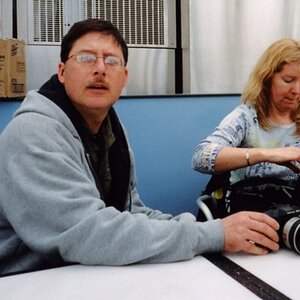
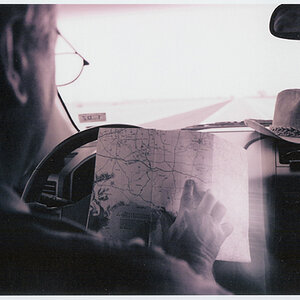
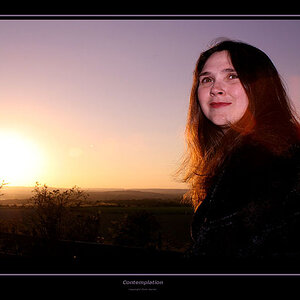

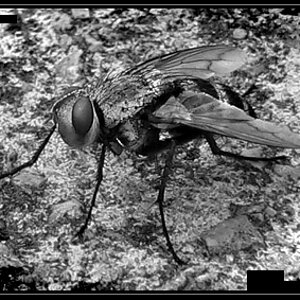
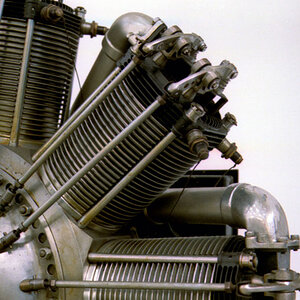


![[No title]](/data/xfmg/thumbnail/37/37522-f67b10bc5ee534f9bc21ee94917445b9.jpg?1619738129)
